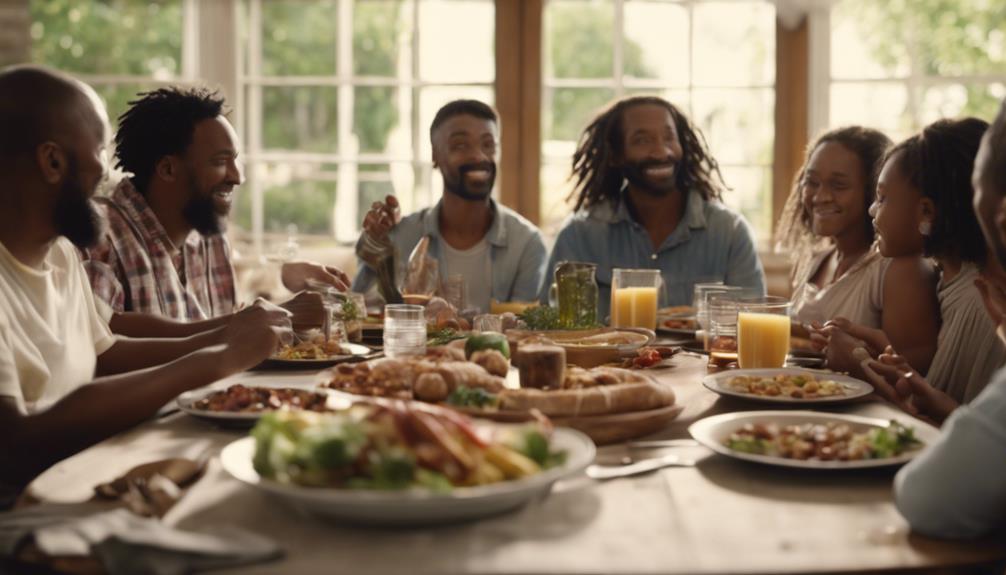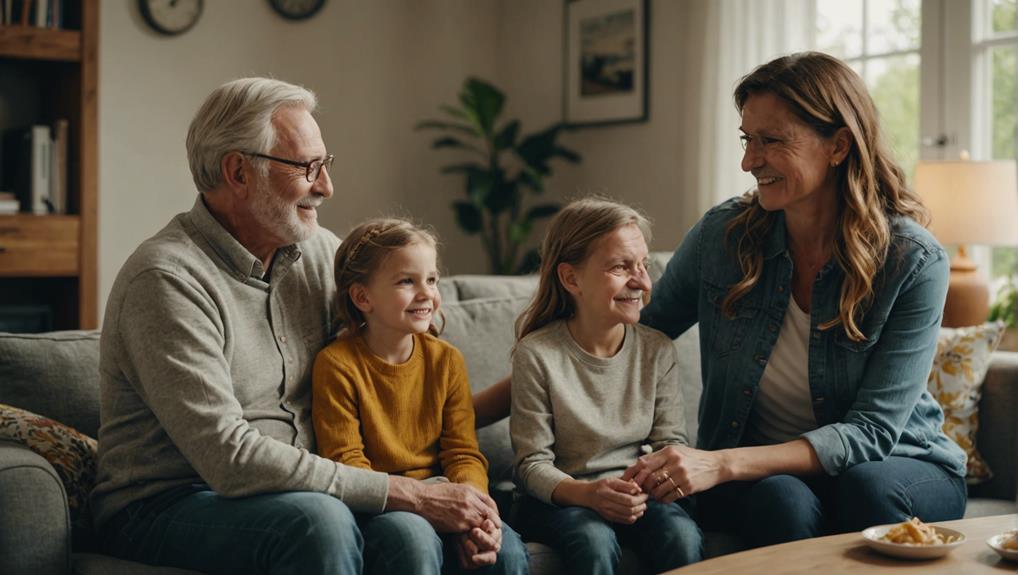When your anxious and avoidant styles clash, it’s key to understand each other’s triggers and boundaries. You on the anxious side should focus on self-soothing and emotional independence, while your avoidant partner needs space without feeling rejected. Clear communication and patience help create a safe, balanced connection. Learning how to manage these differences can transform tension into trust—if you want to discover proven strategies, keep exploring this connection.
Key Takeaways
- Recognize and validate each other’s attachment needs to foster understanding and reduce misunderstandings.
- Establish clear boundaries to balance closeness and independence, promoting emotional safety.
- Practice self-soothing and emotional regulation to lessen dependency and avoid reactive patterns.
- Communicate openly about triggers, feelings, and boundaries to build trust and reduce push-pull dynamics.
- Cultivate patience and mutual effort to transform relationship turbulence into stability and harmony.

Have you ever wondered why relationships between anxious and avoidant partners often feel so turbulent? It’s because these attachment styles create a push-and-pull dynamic that’s hard to steer through. When you’re anxious, you crave closeness and reassurance, often feeling emotional dependency that makes you seek constant connection. On the other hand, your avoidant partner values independence and personal boundaries, sometimes pulling away just when you need intimacy most. This clash can lead to misunderstandings, frustration, and emotional exhaustion if you’re not aware of how these patterns interact.
Understanding emotional dependency is crucial here. As an anxious partner, you might find yourself overly reliant on your partner for validation, comfort, and a sense of security. This dependency can make you cling to the relationship, fearing abandonment or rejection if your needs aren’t met. Conversely, your avoidant partner might feel overwhelmed by this dependency, perceiving it as suffocating or intrusive. They may withdraw or create distance, not because they don’t care, but because they’re trying to protect their sense of autonomy. This cycle leaves both of you feeling misunderstood and frustrated, often escalating the disconnect.
A key factor in breaking this cycle is establishing healthy personal boundaries. Boundaries aren’t about keeping your partner out or creating barriers; they’re about protecting your emotional well-being while respecting each other’s needs. As an anxious partner, setting boundaries might mean recognizing when your need for reassurance becomes excessive and learning to soothe yourself. For your avoidant partner, respecting their boundaries involves giving them space without feeling rejected or abandoned. When both of you clearly communicate your limits, it reduces misunderstandings and creates a sense of safety.
You can work toward a healthier relationship by actively practicing self-awareness. Notice when your attachment style triggers a reaction—whether it’s seeking reassurance or pulling away—and pause before acting impulsively. Cultivating emotional independence helps you depend less on your partner for your happiness, which in turn reduces the pressure on them. For your avoidant partner, learning to be more present and responsive without feeling overwhelmed can foster trust and intimacy. Both of you need to recognize that boundaries are not barriers but tools to nurture mutual respect and emotional safety. Additionally, understanding the role of AI technology in supporting mental health can provide innovative ways to develop emotional resilience and communication skills.
In the end, steering a relationship between an anxious and avoidant partner requires patience, understanding, and intentional effort. By addressing emotional dependency and respecting personal boundaries, you can build a more secure, balanced connection. It’s not about changing each other but about understanding your patterns and supporting each other’s growth. With time and commitment, you can transform turbulence into harmony, creating a relationship where both partners feel valued, safe, and free to be themselves.
Frequently Asked Questions
How Can Anxious and Avoidant Partners Build Trust?
To build trust, you need to prioritize emotional safety in your relationship. Be open and consistent with your actions, showing your partner they can depend on you. Practice active listening and acknowledge their feelings without judgment. By creating a safe space for vulnerability, both of you can gradually strengthen trust. Remember, patience and understanding are key to overcoming differences and fostering a secure, trusting connection.
What Are Effective Communication Strategies for These Attachment Styles?
Imagine your communication as a bridge—steady and safe. You should focus on emotional regulation, staying calm during tough conversations, and respecting boundaries to foster trust. Use clear, honest words, and listen actively to your partner’s needs. This approach helps avoid misunderstandings and creates a space where both of you feel heard and secure, transforming dialogue into a tool for connection rather than conflict.
Can Therapy Help Resolve Conflicts Between Anxious and Avoidant Individuals?
Therapy can definitely help resolve conflicts between anxious and avoidant individuals by focusing on attachment repair and setting healthy emotional boundaries. You’ll learn how to recognize and respect each other’s needs, fostering understanding and trust. A therapist guides you through communication techniques that reduce misunderstandings and emotional triggers. This process encourages healthier interactions, helping you build a more secure connection despite your contrasting attachment styles.
How Do Childhood Experiences Influence These Attachment Behaviors?
Childhood experiences shape your attachment patterns, influencing how you connect with others. If you faced childhood trauma or inconsistency, you might develop anxious or avoidant behaviors as coping mechanisms. These attachment styles serve as survival strategies, helping you manage fears of abandonment or rejection. Recognizing how your early relationships affected you is essential for understanding your current patterns and working toward healthier, more secure connections.
What Are Signs of Progress in Overcoming Attachment Challenges?
Imagine you’re riding a bike without training wheels—each wobble shows growth. Signs of progress include increased emotional resilience and a willingness to be vulnerable. You notice you’re more comfortable sharing feelings and trusting others. These changes mean you’re actively developing emotional resilience, breaking old patterns. Overcoming attachment challenges isn’t linear, but with each step, you’re building stronger connections and embracing vulnerability, just like upgrading from a shaky start to confident riding.
Conclusion
Think of your attachment styles as two dancers in a delicate ballet. When anxious and avoidant partners move in harmony, they create a beautiful, if complex, performance. But if one pulls away or rushes forward, the dance falters. Remember, mastering this dance requires patience and understanding. By learning each other’s rhythm, you can transform your conflicting steps into a graceful, complementary routine—turning your differences into a dance that truly flows.









